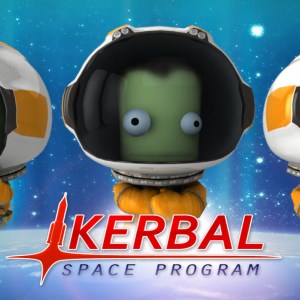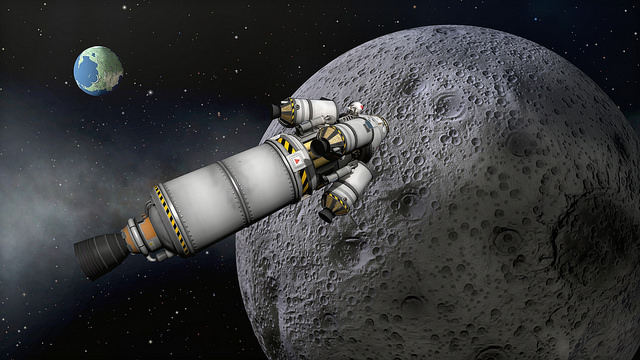
“Oh, this will be a fun little spaceship designing game. Look at the cute little aliens. Probably will get to have a fly in about five minutes I reckon, kind of like virtual Lego and ohmygod it’s complicated.”
That sums up my first impression of Kerbal Space Program. A sort of sandbox like design-em-up, once I start to see the depth here I figured how hard can it really be? It’s not rocket science. Well, it’s exactly rocket science. And it’s super hard.
To be fair, there’s a lot of tutorials here which ease you in and allow you to start having some success pretty quickly which is reassuring. It very quickly dawns upon you that despite the cartoonish appearance and behaviour of the little aliens (and their mission to explore the Mun) you’re playing in a serious physically realistic space sim. The game is really an exercise in constant exploration – of you exploring the vast emptiness of the universe, and of your mind and ability, in greater, bigger and better contraptions with which to evolve playing the game.

Most of your time is spent in your NASA-esque complex as you assemble and test your space craft. Whilst it looks fairly unexciting (and does suffer some fairly horrific frame rate issues at points) it’s clear that all the gubbins are working hard and fast behind the scenes imaging and calculating tiny adjustments to your ship which could have huge or even catastrophic implications in space.
Modes are essentially limiters for your enjoyment, with the sandbox mode giving you everything to play with and have fun. Science mode tasks you with hitting certain achievements (like measuring the air in the upper atmosphere) to unlock and develop research and tech trees to unlock more parts. Finally Career mode is the old classic of performing missions for money to ensure that you earn your funding.
As I discovered, just designing a cool looking ship doesn’t cut it. It will need to have the proper ejection sections to drop unneeded loads in space. You will want to consider symmetry as not to be thrown off balance by pesky gravity and a chute to enable you to land safely and not kill everyone. The learning curve is long and brutal but incredibly rewarding. Tutorials really only serve you with enough to know what the buttons do and the concept but like many things in life you don’t really start learning until you have built and crashed a few spaceships and killed a few astronauts.
It’s not a quick blast kind of game. You need to dedicate some quiet time to sit down and begin to chip away at the layers of complexity. The UI is your worst enemy (after gravity) with the left stick controlling the mouse which feels less than great although the motion controls of the PS4 pad let you fine tune movements (which I don’t like but actually works quite well). Text is super small and you have to click and drag text boxes around to be able to select things (which, during the tutorial I was convinced was a game breaking fault and had to ask someone how to get past it). This doesn’t really feel well optimised for console honestly but will be the only option for some. It’s not a dealbreaker by any means but it’s just a less than perfect solution.
There really isn’t much else about that is like Kerbal Space Program – especially on home console. Not many games attempt it’s steep learning curve and constant punishment to make you learn continually. In that sense it’s probably more akin to Dark Souls than anything else which is a weird comparison to make but certainly I felt the same levels of frustration build although this very quickly subsides with huge euphoria as you accomplish even the smallest of achievement.
Reviewed on PS4


Leave a Reply